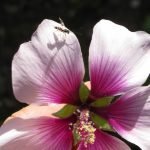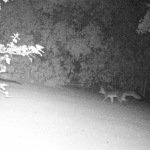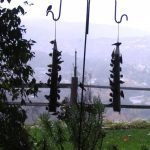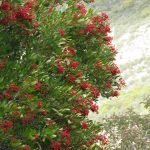A friend forwarded an article “Are We Really Helping” by plant ecologist Susan Tweit that questions how much the planting of native plants aids wildlife. The answer is yes, it does. As I’ve mentioned in previous posts, while keeping some mature (50 + years) California natives such as Sugar Bush (Rhus ovata) and California Sycamores (Platanus racemosa) on our property, we’ve converted a former lawn in our front yard to mostly native plants. We’ve also taken out dead or half-dead oleanders in our backyard and plugged in local California native plants such as sages (salvias), toyons and elderberries. The result has been more wildlife, evidenced by butterflies, small native insects, bees and wasps that visit our plants (and our pool where I fish them out), and larger critters photographed in our wildlife camera. Photos below.

The article mentions a couple studies: one where urban finches in the Phoenix area had more parasites and viruses than more rural locales, likely due to higher pesticides and crowded feeders. The second studied 54 cities around the world and plant diversity in 110 cities, and concluded “not so surprisingly that urban habitat supports fewer bird and plant species than wild habitat.”
We still feed birds by throwing some seed down on the ground in the morning – so not to feed rats at nite – and we do feed thistle to the goldfinches. But we make sure to have buckwheat, and especially sages (salvias) in our yard that also feed them. We have a large crowd of visiting robins every winter that love the berries on our toyons this time of year.
I urge people to research native plants in their area — and to plant them. Here’s a photo gallery that helps illustrates the benefits we’ve found:






Leave a Reply